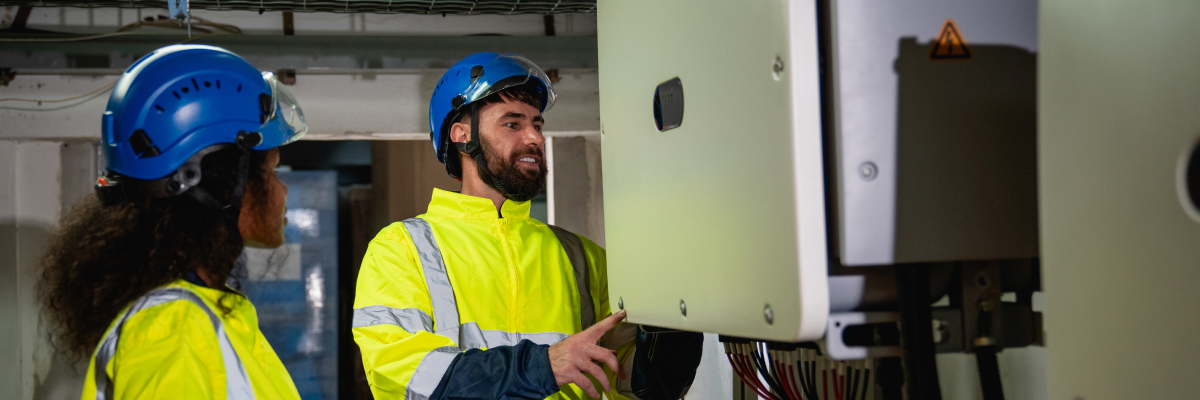
How to Prevent Corrosion in Electrical Enclosures
Corrosion may seem like a minor issue at first, but in the world of electrical enclosures, it can cause serious problems like damaged circuits, compromised safety, frequent breakdowns, and costly unplanned downtime. For industries that rely on performance and reliability, preventing corrosion in electrical enclosures is not just a maintenance task but it’s a business-critical need.
At Bartakke Enclosures, we understand the harsh environments our customers operate in – whether it’s the humid air of coastal regions, chemical-heavy industrial zones, or extreme weather. That’s why we guide our clients on how to prevent corrosion in electrical enclosures through a mix of smart material selection, thoughtful design, and regular care.

Why Do Electrical Enclosures Corrode/Rust?
Corrosion occurs when metals react with oxygen, moisture, or chemicals in their surroundings. In mild steel, this results in rust formation. While even stainless steel, though highly resistant – can corrode under harsh conditions like salt spray, acidic fumes, or poor ventilation.
Best Practices to Prevent Rusting in Electrical Enclosure
Use the Right Material for the Right Application
Always start with material selection. At Bartakke, we offer a range of enclosures including:
- Mild Steel Enclosures: Cost-effective and best suited for indoor or controlled environments.
- Stainless Steel (SS304/SS316) Enclosures: Designed for outdoor and highly corrosive environments.
For marine, chemical, or food-processing industries, we recommend SS316L-grade enclosures, known for their superior resistance to saltwater and aggressive chemical exposure.
Protective Coating and Surface Treatment
A durable coating acts as a shield against corrosion. Our enclosures are protected with multi-layer powder coating, ensuring long-term resistance to moisture, dust, and environmental contaminants.
This prevents oxidation and keeps the surface intact—even in tough industrial conditions.
Enclosure Design Matters
Rust often forms where water collects edges, gaps, and joints. Good design practices include:
- Sloped roofs to prevent water pooling
- Smooth welds and sealed joints
- Proper gasket sealing (IP65 or IP66 certified)
- Drainage holes or breathers for condensation release
A well-designed enclosure can drastically reduce the risk of rust buildup, especially in outdoor installations.
Humidity and Moisture Control
Moisture trapped inside the enclosure can be as damaging as exposure outside. We suggest:
- Desiccants or dehumidifier pouches inside the enclosure
- Breather vents that allow air exchange without water ingress
- Use of Vapor Corrosion Inhibitor (VCI) solutions like Plastabs, which release anti-corrosion vapors in a sealed space and are safe for electronics
Such solutions are non-conductive, non-toxic, and ideal for control panels or MCCs in sensitive environments.
Avoid Galvanic Corrosion
Using dissimilar metals (e.g., stainless steel enclosure with zinc-coated bolts) can lead to galvanic corrosion. Always ensure compatible materials are used for:
- Mounting brackets
- Hinges
- Fasteners and clamps
Periodic Inspection and Cleaning
No matter how durable the enclosure is, routine checks make a difference:
- Inspect for surface damage or scratches (which can expose the metal)
- Wipe off any standing water or chemical deposits
- Touch up coatings if chipped or worn
Even simple steps like removing dust or ensuring tight gasket seals help maintain the enclosure’s lifespan.
Bonus Tip: Consider Your Installation Location
A poorly chosen location like placing an enclosure under dripping pipes or in a splash zone can accelerate corrosion. Evaluate environmental exposure during the design and installation phase.
Conclusion: Long-Lasting Protection Starts with Smart Choices
Rust doesn’t happen overnight, but it builds silently. With the right combination of material selection, protective design, anti-corrosion techniques, and regular care, you can significantly extend the life of your electrical enclosures and reduce maintenance costs.
At Bartakke, we don’t just manufacture enclosures, we help you choose the right solution for your operating environment. If you’re looking for custom-built, rust-resistant electrical enclosures in India, our expert team is happy to help.

